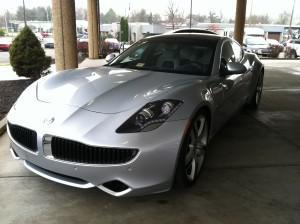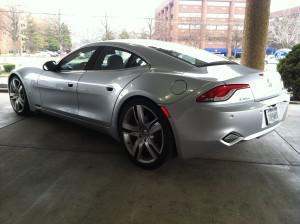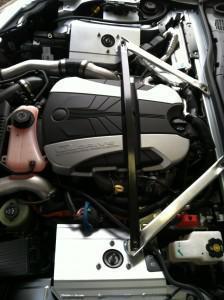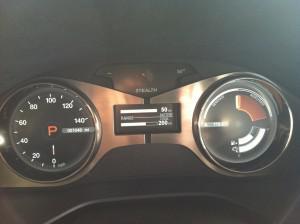 The Fisker Karma is unlike any other car on the road. Known as an EVer—Electric Vehicle extended range—Fisker correctly claims the Karma to be “the world’s first high performance electric luxury vehicle with the freedom to plug in or fill up.” This four-door sedan is well-built, practical, and beautifully designed inside and out—all by a California company that was founded less than five years ago. But, in the midst of questions regarding its fuel efficiency, and the ongoing political controversy surrounding a $529 million U.S. government loan guarantee, some people think Fisker is destined to go the way of Solyndra.
The Fisker Karma is unlike any other car on the road. Known as an EVer—Electric Vehicle extended range—Fisker correctly claims the Karma to be “the world’s first high performance electric luxury vehicle with the freedom to plug in or fill up.” This four-door sedan is well-built, practical, and beautifully designed inside and out—all by a California company that was founded less than five years ago. But, in the midst of questions regarding its fuel efficiency, and the ongoing political controversy surrounding a $529 million U.S. government loan guarantee, some people think Fisker is destined to go the way of Solyndra.
I’m not one of them.
The Fisker is a car for the one percent, but it still offers a compelling business case.

The first thing I noticed after arriving at Fisker of Northern Virginia was how striking the car is in person. Besides the elegant contours of the bodywork, my eyes were drawn to the standard 22-inch wheels, wrapped in high profile tires to preserve ride quality. The extremely long wheelbase (124-inches) also caught my eye. Compared to a Mercedes S-class, the Karma’s wheelbase is 11-inches longer, even though their overall lengths are within 2-inches. At 52-inches tall, the Karma sits just half an inch higher than a Jaguar XK coupe sports car, but still provides enough headroom for tall adults. The standard, 120-volt solar panel roof had a cool design, too.

For all its expensive technological innovations, the EPA ratings for the Karma aren’t that good. In pure electric mode, it is rated as getting the equivalent of 52 miles per gallon (MPG) combined.

Despite driving in moderate traffic, I began to explore some of the Karma’s capabilities. On a full charge, the Karma’s two electric motors produce 403 horsepower and a whopping 959 lb-ft of torque. When I started the car, it showed a total range of 200 miles (50 miles in electric mode, 150 miles extended range). By pulling the left-hand paddle on the steering wheel, the Karma switches from Stealth mode (electric

For a 5,400lb car, the Karma’s handling was fairly impressive. Steering was nicely weighted, and the car responded more sharply to inputs than I had imagined. The chassis was on the firm side for a luxury sedan, but still on par with other sedans with sporting pretensions. The brakes (Brembo 6-piston front, 4-piston rear) also performed very well. MotorTrend says they can stop the car in an excellent 110 feet. Thanks to a low center of gravity and wide tires (255/35 front, 285/35 rear), they also found that the Karma could generate .92g of lateral acceleration, better than most sports cars. See more statistics in this video by MotorTrend.
As an everyday driving experience, I think the Karma would be hard to fault. Yes, the fuel economy could be better, the rear seats could be more spacious, and it’s weird that Fisker builds them in Finland rather than the U.S. (despite receiving the U.S. loan guarantee), but those issues aside, it is very appealing as a complete package. It competes well not only against its main rival, the Panamera S Hybrid, but I think the car’s many strengths—luxury, design, performance, efficiency—will make it attractive to all sorts of (wealthy) buyers for years to come.
[Images by author]

